When stability and compatibility come to mind when referring to the power supply for electrical equipment, frequency often gets overlooked. The Frequency of an AC power supply has a significant impact on the performance and operation of precision-oriented equipment in a particular industry. Here comes the frequency converter: a specialized equipment intended for adjusting the frequency of power according to requirements. So, from operating machines designed for other regional standards to ensuring heavy industrial processes run smoothly, the frequency converter works silently to meet other necessary technological requirements. We will examine the relevance of AC power supply frequency converters, their industrial applications, and how they enable the smooth operation of processes worldwide—unfolding the name behind global interfacing and innovation.
Definition and Functionality
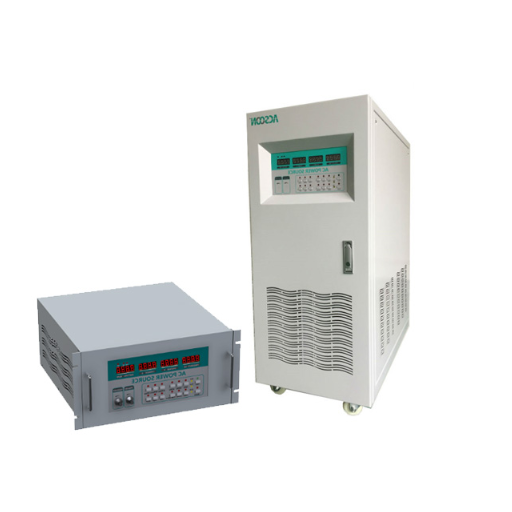
The primary function of frequency converters is to alter the AC power supply frequency from a source to match the specific requirements of equipment or systems. The most basic feature is to ensure that the power source and apparatus are compatible, allowing them to perform seamlessly. These are typical frequency converters that convert the nominal frequency of 50 Hz or 60 Hz, allowing their specific machinery or equipment to operate in particular areas or industries. This enhances efficiency, minimizes energy loss, and supports efforts toward global standardization.
What is a Frequency Converter?
Frequency converters describe any electronic or electromechanical equipment that changes the frequency of an electrical power supply to suit a particular application, which may operate at various systems and regions.
Types of Frequency Converters
| Type | Key Points | Parameters |
|---|---|---|
| Voltage Source Inverter | Uses capacitors for energy storage | Slow dynamic response, voltage control |
| Current Source Inverter | Uses reactors for energy storage | Fast response, current control |
| V/f Control | Maintains proportional voltage-frequency | Avoids weak magnetism, energy saving |
| Vector Control | DC motor-like control for AC motors | High accuracy, fast response |
| Differential Frequency | Adjusts motor slip for speed control | Simple structure, moderate accuracy |
| PAM Control | Pulse amplitude modulation | Regulates output waveform |
| PWM Control | Pulse width modulation | Adjusts pulse width for control |
| SPWM Control | Sinusoidal pulse width modulation | Produces sinusoidal output |
| SVPWM Control | Space vector pulse width modulation | Drives a rotating magnetic field |
| AC-DC-AC Converter | Converts AC to DC, then back to AC | Widely used, stable performance |
| AC-AC Converter | Directly converts AC to adjustable AC | High efficiency, simple circuit |
How Frequency Converters Work
Frequency converters work by changing the frequency of the electrical power supplied to a device, consequently changing the speed at which motors or equipment run and operate. The indispensable parts of a frequency converter are the rectifier, DC link, and inverter. The following events describe how the process generally goes:
1. Rectification
This stage converts the AC power into DC power. This is done to have a steady energy source that can be more easily controlled during the coming conversion process.
2. DC Link
The DC power is now stabilized through the DC link. In most cases, filters within the link comprise capacitors or inductors that help smooth the current as much as possible, thereby maintaining a constant voltage.
3. Inversion
This step reconverts the stabilized DC power into AC power of the desired frequency and, in some cases, even at a different voltage from that of the incoming AC power. The inverter utilizes semiconductor switches, such as the Insulated-Gate Bipolar Transistor (IGBT), to generate the output frequency.
4. Control Mechanism
Today, frequency converters feature control microcontrollers or digital signal processors (DSPs), which precisely control the frequency and output voltage, enabling the equipment to operate efficiently in accordance with its requirements, such as reducing consumption or operating at varying load levels.
Efficiency and Data
In the modern world, alternatives have emerged to enhance the efficiency and performance of frequency converters. Industry insiders assert that, depending on design and application, the efficiency of modern frequency converters can reach up to 95-98%. The frequency converter supports frequencies ranging from 0.1 Hz to several hundred Hertz and thus caters to industries as diverse as HVAC systems and industrial machinery.
In terms of conserving energy, frequency converters do their part. To cite an example, industrial motors are said to draw up to 30% less energy from their environment when fitted with frequency converters than do systems operating at constant speeds. Reduced consumption translates to reduced operational costs and a smaller carbon footprint for manufacturers or industries that are energy-intensive.
By utilizing these designs, frequency converters enable the seamless communication of electrical systems across various industries at the global level, accommodating different power grids and diverse on-load performance and energy consumption.
Importance of AC Power Supply Frequency Converters
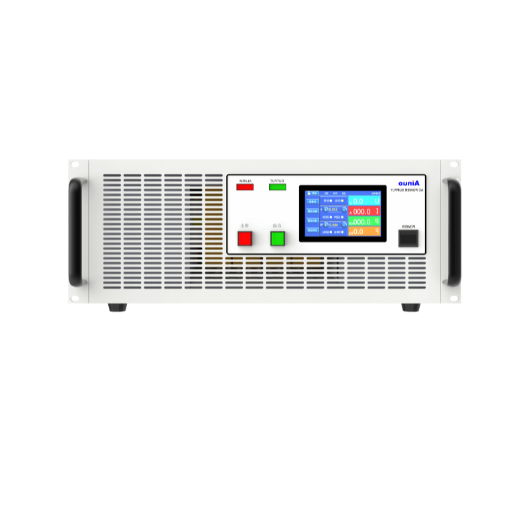
The need to ensure equipment compatibility and efficiency with a power grid of differing standards makes AC frequency converters significant. Allow an appliance designed for one frequency, such as 50 Hz, to function perfectly well in a different setting without any complications or performance losses. They also help fine-tune energy consumption by addressing the specific power supply requirements of a given system. This reduces waste and enables the entire system to operate with the desired reliability. They are indispensable in industries ranging from manufacturing to healthcare and transportation, where a power supply of a modulated nature and consistency is a critical issue.
Enhancing Electrical Compatibility
Frequency converters bridge the gap for electrical systems running at different frequencies; say 50 Hz in one country and 60 Hz in another, an adverse setup in a worldwide infrastructure. It allows equipment that is standardized for one frequency to work in an area of another frequency. According to recent industry studies, approximately 70% of industrial equipment operates more efficiently with advanced frequency conversion technology, resulting in a 30% decrease in energy consumption.
With a frequency converter installed, the entire system can perform real-time monitoring, diagnostics, and automated adjustments to deliver optimum performance. For example, energy audits in manufacturing plants with advanced frequency converters reported that downtimes had been reduced by 25%, in turn, driving operational efficiency and cost savings. The converters also provide greater compatibility between solar and wind energy systems and grid requirements on the renewable energy side, thereby making transitions smoother and reducing approximately 15% of energy losses.
Regulations well back these technological advances. For instance, the International Electrotechnical Commission (IEC) has emphasized the importance of efficient power conversion solutions in the global sustainability effort. In the growingly interlinked industrial setup, the role of frequency conversion in electrical compatibility and energy-efficient operations would advance further, fostering the vision of a sustainable and connected tomorrow.
Improving Energy Efficiency
Energy efficiency finds a pressing need to mitigate environmental impacts and further conserve the depleting natural resources across various industries. With advances in technology and practices, enormous progress can be achieved in energy conservation without compromising production. Five is the number of ways to make considerable improvements in energy efficiency:
Energy-Efficient Equipment
Present-day machinery and equipment employ advanced design and materials to minimize energy waste. For example, energy-efficient motors consume at a maximum of 30% energy when compared with traditional ones.
Smart Energy Management Systems
Adopting innovative systems to monitor energy consumption in real-time would greatly increase efficiency. Studies suggest that actionable insights from smart systems could lead to 20% reductions in energy costs.
Industrial Processes Optimization
Modernization and streamlining of industrial processes will reduce inefficiency, thereby lowering energy demand. For example, optimizing temperature control systems in manufacturing might reduce energy consumption by at least 15%.
Renewable Energy Integration
Renewable energy technologies, such as solar panels and wind turbines, are all good examples of renewable energy. Facilities that utilize renewables in their energy mix are estimated to reduce carbon emissions by around 50%.
Insulation and Design
Better insulation, efficient windows, and innovative building design reduce heating and cooling needs, saving up to 40% on energy costs.
Hence, these methodologies will help support the sustainability goals and provide solutions to the rising varieties of demand for energy-efficient industries.
Applications Across Various Industries
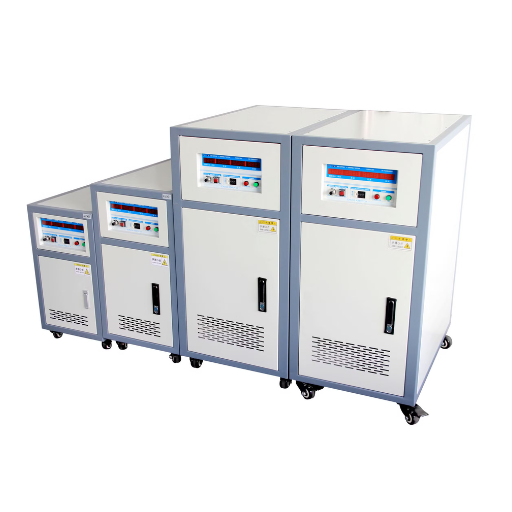
Medical Equipment
Medical science and technology systems such as portable diagnostic machinery and patient monitoring equipments must be rugged for utmost reliable performance in critical, fast-paced scenarios.
Military and Defense
Rugged technology is vital for mission-critical operations, as equipment finds its applications in extreme terrains and under severe weather conditions to assert its durability and effectiveness.
Energy and Utilities
From energy production right down to energy distribution, outdoor conditions are too harsh for equipment to operate efficiently under continuous use.
Transportation and Logistics
Rugged systems apply to fleet management, tracking, and communication technologies, designed to operate reliably under high vibration and temperature-varying situations.
Industrial Manufacturing
Increasingly, industrial manufacturing requires ruggedized equipment to maintain uninterrupted and efficient operations. The global industrial automation market was valued at $205.86 billion in 2022 and is expected to rise to $395.09 billion by 2029, growing at a CAGR of 9.8%.
Technology has evolved, and with it, smart factories have emerged. Rugged systems serve as the backbone for this transformation, as they must withstand the harsh conditions of vibration, moisture, dust, and high temperatures found in a manufacturing environment.
Rugged and industrial-grade embedded systems and control panels, for instance, must guarantee smooth functioning in production lines even under extreme conditions, enabling real-time monitoring, predictive maintenance, minimizing downtime, and enhancing production efficiencies. Studies indicate that the implementation of robust IoT-based systems in specific industries has resulted in a 20-30% reduction in operational costs.
With rapid technological developments and the need for rugged and reliable equipment, rugged technology becomes of prime importance in modern industrial manufacturing.
Renewable Energy Systems
To lessen the reliance on fossil fuels and mitigate the effects of climate change, renewable energy systems are essential. These systems generate electricity from naturally replenishing resources and are thereby being implemented more intensively worldwide for their environmental and economic benefits. Here are five main types of renewable energy systems, accompanied by brief descriptions and some data:
- Solar Energy: In a solar energy system, sunlight is converted into electricity utilizing PV cells or by means of solar thermal systems. Global solar capacity crossing 1,000 GW in 2022, as per the International Renewable Energy Agency (IRENA), has risen to rank among the fastest-growing renewable sources of energy.
- Wind Energy: Wind turbines make use of kinetic energy in the wind to generate electricity. Wind energy, both onshore and offshore, combined generated approximately 837 GW in 2022, according to the Global Wind Energy Council (GWEC).
- Hydropower: Water flowing down generates electricity by turning turbines. This is among the oldest and well-established renewable energy sources, with a global installed capacity exceeding 1,200 GW as of 2022.
- Geothermal Energy: Geothermal energy systems tap Earth’s internal heat to generate power or heating. They are thus highly efficient, especially in geologically active areas, and extremely reliable. Geothermal capacity worldwide reached approximately 16 GW in 2022, according to IRENA.
- Biomass Energy: Biomass energy systems utilize organic materials, including wood, agricultural residues, and waste, to produce electricity or heat. Biomass contributed approximately 70 GW to global renewable energy capacity in 2022, demonstrating its potential as a viable alternative to conventional energy sources.
The systems of renewable energy, stabilizing biodiversity and land resources, can provide solutions to ever-rising energy demands.
Aerospace and Defense
The aerospace and defense industry is a significant technological driver and a substantial contributor to the economy. According to estimates, in 2022, the world aerospace and defense composite market was worth USD 795 billion, and it is expected to cross USD 1,000 billion by 2030, at a CAGR of nearly 5% from 2023 up to 2030. This growth in running pace is primarily driven by the expansion of government spending on defense needs, advancements in commercial aviation, and the demand for next-generation systems, including autonomous systems, hypersonic weapons, and space exploration equipment.
One of the recent developments in this sector is the rapid surge of space programs. Countries like the United States, China, and India are investing heavily in satellite launches, lunar missions, and space stations, while private entities such as SpaceX and Blue Origin are revolutionizing the paradigm of commercial space travel and satellite internet services. The defense domain is witnessing an increased focus on AI-driven combat systems, cybersecurity, and UAVs, ushering in the age of modernity and digital transformation in military operations.
While in commercial aviation, increasing demand is being felt for fuel-efficient aircraft and green energy alternatives such as hydrogen-powered and electric aircraft. Not only do we see a positive step towards solving major concerns related to carbon emissions, but this will also help promote the future of aerospace in tune with global climate aspirations. Recent data have revealed that Boeing and Airbus, among other companies, are now heavily investing in R&D to develop game-changing aircraft models, which are expected to be seen by the mid-2030s.
Thus, with an ever-growing list of emerging company settings and a global problem to solve, it remains a stage for economic development and technological advancement.
Benefits of Using Frequency Converters
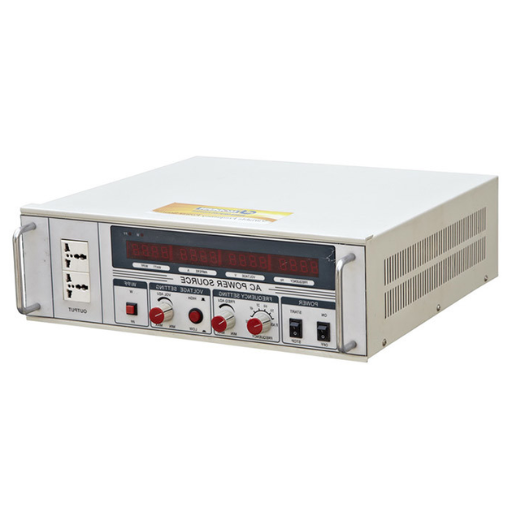
| Benefit | Key Points | Parameters |
|---|---|---|
| Energy Efficiency | Reduces energy consumption in motors | Optimized speed and power usage |
| Speed Control | Adjusts motor speed as needed | Precise frequency and voltage control |
| Soft Starting | Prevents sudden motor starts | Controlled acceleration and deceleration |
| Extended Equipment Life | Reduces mechanical stress on motors | Smooth operation and torque control |
| Overload Protection | Protects motors from overheating | Thermal overload and current limits |
| Improved Process Control | Enhances accuracy in industrial processes | Adjustable speed and torque settings |
| Reduced Maintenance Costs | Minimizes wear and tear on equipment | Smooth operation and fewer breakdowns |
| Noise Reduction | Lowers noise levels in motor operations | Controlled motor speed and vibration |
| Energy Feedback | Recovers energy during braking | Feedback braking capability |
| Versatile Applications | Suitable for various industries | Fans, pumps, conveyors, and more |
Voltage Regulation and Stability
In voltage regulation and stability in electrical systems, frequency converters play a vital role. By supplying power at appropriate frequency and voltage levels, they allow equipment to run consistently and reliably. Here are the significant advantages of frequency converters concerning voltage regulation and stability:
- Better Power Quality: They prevent voltage fluctuations and distortions, making sure sensitive equipment runs smoothly and stably.
- Protection Against Voltage Spikes: These systems protect against sudden voltage surges, which may damage the electronics and machinery.
- Load Balancing: Frequency converters generally distribute electrical loads evenly to prevent overloading and reduce the risk of failures.
- Energy Efficiency: Frequency converters maintain voltage levels corresponding to load requirements, resulting in decreased energy consumption and lower operating expenses.
- Longer Equipment Life: Stable voltage output results in reduced wear and tear on electrical components, supporting equipment longevity and lowering maintenance requirements.
Flexibility in AC Power Sources
Frequency converters are vital for providing enhanced flexibility to AC power sources. They help devices and systems to work seamlessly across different voltage and frequency standards, such as 50 Hz and 60 Hz. Considered in this light, adaptability becomes crucial for the industries or applications that depend on importing, exporting, or relocating equipment internationally.
For instance, frequency converters may enable a machine designed for a 60 Hz power grid in the U.S. to operate effectively in a 50 Hz power region, such as Europe. This creates a cost advantage in eliminating the need to buy brand-new equipment.
According to some recent reports, the global frequency converter market should grow steadily at a CAGR of 6.5% during 2023-2030. This growth signifies the rise in demand for AC power source flexibility, driven by increasing industrial activities and cross-border trade.
Key adopters of frequency converters include manufacturers, the aerospace industry, and renewable energy, all of which face the need for precise power control and compatible power systems.
Due to its ability to supply stable and usable power regardless of regional differences, frequency converters remain an integral solution for making operations that span two or more regions efficient and cost-effective.
Cost Savings and ROI
Cost savings and return on investment, in my eyes, are about long-term value afforded by frequency converters. Since these devices enable energy systems to be managed appropriately, they contribute to reducing energy consumption and utility charges. Also, frequency converters somehow minimize equipment wear and tear. Further reduction of maintenance and replacement costs increases profitability. Over time, the initial investment in frequency converters would be recovered through the saved operational costs, making it a more cost-effective option for our projects.
Choosing the Right Frequency Converter
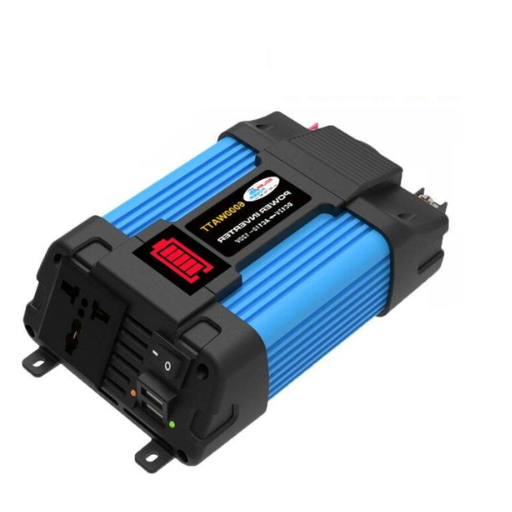
Several factors should be considered when selecting a suitable frequency inverter. First, identify the specific requirements of your equipment, including operating voltage, power range, and load type. From there, ensure that the electrical machine can perform effectively with other elements in its environment, including climatic conditions such as temperature and humidity, as well as exposure to dust or moisture. Then, consider energy efficiency features and user control characteristics, as that would help maximize performance and ease of operation. Consult with the manufacturer or technical experts who are technically reliable to ensure that this converter meets industry standards and suits the project’s needs.
Understanding Your Power Needs: Single Phase vs. Three Phase
| Aspect | Single-Phase | Three-Phase |
|---|---|---|
| Power Delivery | Peaks and dips in power | Steady and constant power |
| Voltage | Typically 230V | Typically 415V |
| Wiring | Two wires: phase and neutral | Three wires, sometimes a neutral |
| Efficiency | Less efficient | More efficient |
| Applications | Residential and small appliances | Industrial and commercial equipment |
| Load Capacity | Handles smaller loads | Handles larger loads |
| Cost | Lower initial cost | Higher initial cost |
| Fault Tolerance | Higher chance of faults | Minimal chance of faults |
| Motor Lifespan | Shorter lifespan | Longer lifespan |
| Energy Conversion | Less efficient energy conversion | Converts 97% energy to mechanical power |
Frequency Specifications: 50Hz vs. 60Hz
One must understand the differences and consequences of selecting between 50Hz and 60Hz power frequencies. Both frequencies are worldwide standards: 50Hz is used mainly in Europe, Asia, Africa, and Australia, while 60Hz is predominant in North and South America. Both are equally reliable, but their application depends on infrastructure and, hence, specific requirements in a particular region.
The Key Technical Differences:
Speed of Rotating Machinery:
In an environment of 50Hz, an induction motor and other rotating machinery run at slightly slower speed than in a 60Hz environment. A few examples may clarify this: A motor running on 50Hz will ideally run at 3,000 revolutions per minute (RPM) at no load, whereas at a 60Hz supply, it will continuously run at 3,600 RPM.
It spells a bit of difference in applications where a particular kind of operating speed is desired.
Power Transmission and Efficiency:
The 60Hz higher-frequency system may have marginally less power loss during transmission. This implied marginally higher efficiency is attributed to the 60Hz frequency.
The 60Hz apparatus is always smaller in size than the 50Hz apparatus for the same voltage and power rating, thus reducing space requirements and material costs in specific designs.
Above the Electrical Grid Way:
Countries with a 50Hz infrastructure generally generate power at three-phase voltages of the sort 220-240V, while 60Hz regions typically have two separate residential and industrial grids with voltage levels of 110-120V and 220-240V.
Data Comparison:
- Power Losses: Power losses at 60Hz are generally 20-30% lower than systems at 50Hz for motors of similar design.
- Generator Efficiency: Studies have shown that 60Hz generators could obtain efficiencies of up to 95%, whereas 50Hz generators are closer to 90-92%, depending on size and load.
General Distribution of World Usage:
- 50Hz: Used by about 40% of the world, which stretches through large parts of Europe, Africa, and Asia.
- 60Hz: Powering roughly 60% of the world, mainly in the Americas and a few in Asia.
Application-Specific Considerations:
- 50Hz: Useful where the application involves lower-speed machinery, such as conveyor systems or conventional home appliances.
- 60Hz: Better served in applications that are focused on higher efficiency and smaller equipment, such as data centers or factory automation.
The decision of which frequency to use should be based on regional standards, the availability of equipment, and your specific operational requirements. For either purchasing equipment or designing custom machinery, working on the existing frequency standard will surely ease implementation and alleviate costs.
Key Features to Consider
When assessing frequency standards and their implications, several key factors should be considered. Provided below are five primary considerations:
Efficiency
Higher-frequency systems generally exhibit better efficiency in power distribution and equipment operation, especially in industrial applications such as automation and manufacturing.
Equipment Compatibility
Ensure that your machinery, devices, and electrical systems are compatible with the chosen frequency. In some cases, equipment manufactured for a 50Hz frequency may not function properly or require conversion when swapped into a 60Hz framework.
Regional Standards
Frequency standards are primarily dependent on location. Thus, North America largely operates on a 60Hz standard, while the majority of European and Asian countries operate on a 50Hz standard. Thereby, these standards should be adhered to for ease of integration.
Cost Considerations
The placement of conversion equipment and sourcing of frequency-specific machinery can often impact your budget. Choosing the appropriate frequency is, thus, one way to reduce operating and purchasing costs.
Size and Weight of Equipment
At higher frequencies, transformers, motors, and other electrical components tend to be lighter and more compact. This is highly advantageous for aviation and data centers where space and weight are of the essence.
References
- Power Electronics-Based Voltage and Frequency Controller Feeding Fixed Loads for Application in Stand-Alone Wind Energy Conversion System
This paper discusses voltage and frequency control in power electronics, with a particular focus on wind energy systems. - Configurable Frequency and Voltage Three-Phase Power Supply
This academic work explores three-phase power supplies and their applications, including frequency conversion. - Power Electronics Converter Application in Traction Power Supply System
This study examines the role of power electronics converters in traction power systems, including frequency converters.
Frequently Asked Questions (FAQ)
An AC power supply frequency converter frequency converters changes the frequency of an incoming AC power supply while delivering output power at a different frequency. Typically, it serves as a frequency converter when there is a need to adjust voltage and frequency to meet specific requirements for electrical equipment or appliances.
A frequency converter converts one AC input power for whatever reason, say, 50 Hz at input, and it produces the output power at some required frequency. The output power converters maintain a predetermined voltage level through the design of a sophisticated circuit of inverters and transformers that give a pure sine-wave output.
Processors are the static frequency converters, also known as AC-AC frequency converters, and three-phase frequency converters. These have different applications and are suitable for all specification needs, ranging from individual dynamo voltage variations and frequency used in home appliances to industrial voltage and frequency requirements.
The output voltage from the device can vary significantly depending on the model type and specifications. Prominent output voltages are 220V 50Hz, 240V 50Hz, and 120V 60Hz. It is essential to select a voltage converter that meets the voltage requirements of the electrical equipment.
Yes, a frequency converter can be used for single-phase appliances. However, you must ensure that the converter is designed strictly for single-phase operation to provide the power and reliability required by these appliances.
The output frequency of a frequency converter is crucial in determining how efficiently an appliance can operate and whether it is compatible with it. For example, if a 50 Hz frequency converter is used for an appliance designed to run on 60 Hz, the appliance may either not operate properly or become damaged.
From 1 kVA to 200 kVA, or even more, is what sets the range for any frequency converter in terms of power rating. According to your output power requirements, you can simply choose any converter that meets your needs, whether this be 3 kVA for smaller applications or 100 kVA for industrial installations.
Solid-state frequency converters are well-known for their reliability and efficiency. Employing this modern technology allows for a reduction in line noise and interference, and thereby, these converters become applicable for sensitive electrical equipment and other applications that require high performance.
Yes, some frequency converters can work for the high-frequency applications, including those for 400 Hz. Such frequency converters find their application in more specialized industries, such as aviation and the military.
